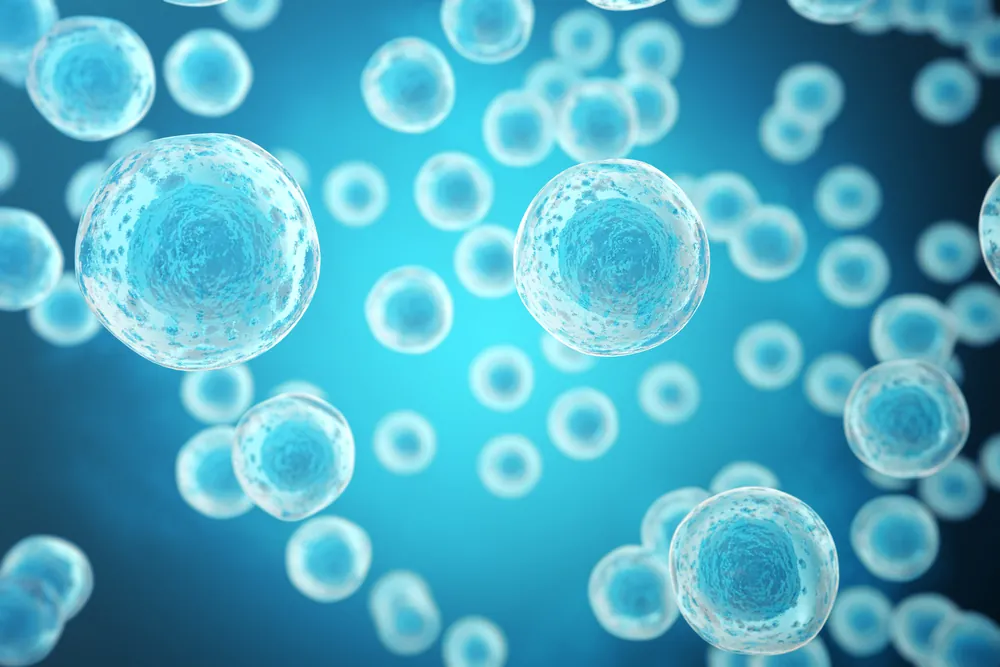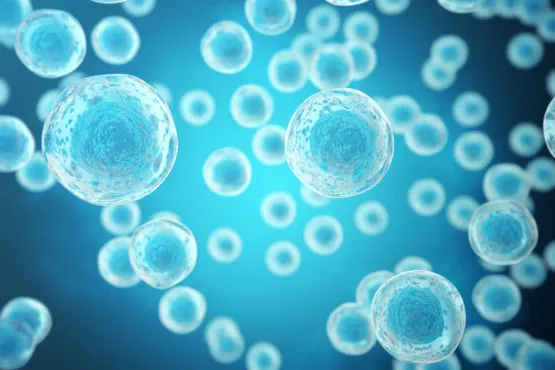Stem cell therapies have been developing and evolving rapidly over the last decade, and extracellular vesicles (EVs) are another innovative approach that researchers are exploring. EVs are being explored for their potential as the basis of new cell therapies, taking the signals generated from various types of stem cells and delivering just those signals, rather than the cells, to the patient.
So what are extracellular vesicles?
EVs are basically membrane-wrapped packages that contain proteins and other molecules and are created and released by cells. Nearby cells intercept these packages and adjust their behavior based on the information contained in the EVs.
Various names have been used to refer to the vesicles being released by healthy cells, including ectosomes, microparticles, and shedding microvesicles. For the purposes of discussion, we will use the term extracellular vesicles (EVs) as a generic term to describe all secreted vesicles.
EVs can broadly be described as either exosomes, microvesicles (MVs) or apoptotic bodies depending on their cellular origin:
| Exosomes | Microvesicles | Apoptotic Bodies | |
| Origin | Endocytic pathway | Plasma membrane | Plasma membrane |
| Function | Intercellular communication | Intercellular communication | Facilitate phagocytosis |
| Size | 40-120 nm | 50-1,000 nm | 500-2,000 nm |
| Contents | Proteins and nucleic acids (mRNA, miRNA and other non-coding RNAs) | Proteins and nucleic acids (mRNA, miRNA and other non-coding RNAs) | Nuclear fractions, cell organelles |
Extracellular vesicles have attracted considerable interest in the scientific community due to their role in intercellular communication. It has been known for a long time that cells release vesicles into the extracellular environment during apoptosis. However, the fact that healthy cells also release vesicles into the extracellular environment has only been realized more recently.
A review of extracellular vesicles and aging
Today, we wanted to point out a great review paper discussing the potential of extracellular vesicles and how they could be used to develop new kinds of therapies[1].
It is not hard to imagine that stem cell therapies could evolve to include therapies that use cellular signals without any actual cells being transferred. Indeed, we have seen some studies showing that even cell culture that has had stem cells kept in it retains some beneficial properties that can help facilitate healing.
The clinical data thus far strongly supports that many cell therapies produce beneficial effects via this signaling. Mesenchymal stem cells are a classic example; the cells themselves do not survive in the patient for long, but the signals they give off encourage tissue repair.
Conclusion
It is logical that therapies based on just these signals are the next step forward, though they would not totally replace whole-cell therapies. It is important that we develop efficient ways to transplant stem cells and improve their survival and engraftment rates to deal with organ failure. This will improve with time, and, indeed, progress on this front has been rapid in recent years.
Meanwhile, we can consider the use of extracellular vesicles as yet another string on our bow and an option for therapy in certain cases.
Literature
[1] Robbins, P. D. (2017). Extracellular vesicles and aging. Stem Cell Investigation, 4(12).




